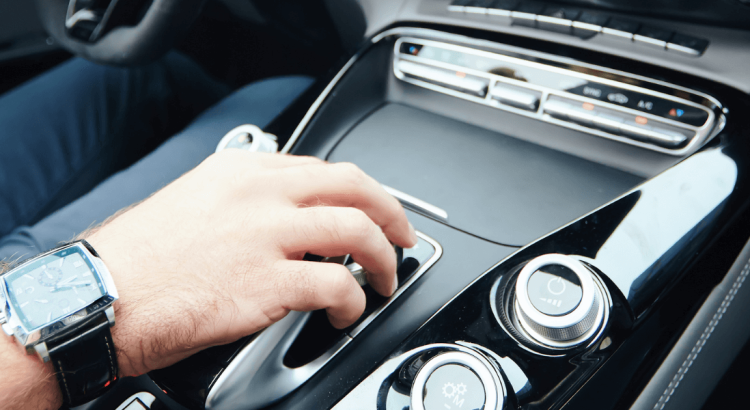
Automatic Transmission: How It Works
Automatic transmissions, also known as automatic gearboxes, are ingenious systems that make driving easier than ever.
Unlike manual transmissions, for which drivers need to shift gears manually, automatic transmissions do so automatically, adjusting gears according to a vehicle’s speed.
Keep reading to find out how automatic transmissions work and what you should do to extend their service life.
![]()
- The End of Combustion Engines in Europe: Yes or No?
What is an Automatic Car?
A car with an automatic transmission has a transmission system that shifts gears automatically, that is, without the driver having to do anything.
An automatic transmission uses a combination of gears, torque converter, and electronics to determine the best gear to engage based on vehicle speed, engine load, and other variables.
What is an Automatic Motorcycle?
Like cars, motorcycles can be equipped with a transmission system that changes gears automatically without requiring the driver to intervene manually.
Unlike manual motorcycles, where drivers need to apply the clutch and change gears manually, automatic motorcycles perform these changes automatically.
How do Automatic Gear Changes Work?
Although there are several types of automatic gearboxes, the most common model contains a torque converter, which is responsible for promoting the force distributed to the driveshaft.
In automatic gearboxes, the clutch is operated via the hydraulic system, which consists of 2 spherical plates with a specific type of oil inside, connected to the engine.
When the driver accelerates, the engine causes the disks to rotate, centrifuging the oil and prompting the automatic box to work.
What are the Operating Principles of an Automatic Transmission System?
The components that operate together to provide an efficient, comfortable driving experience when driving an automatic vehicle are:
- Torque converter: replaces the clutch in manual transmissions, allowing automatic vehicles’ engines to run even when stationary;
- Planetary Gears: (or epicyclic gear trains) are made up of 3 main components: a sun (central gear), planets (smaller gears orbiting the sun) and a ring gear (outer gear). Gears can be shifted by changing the relative speed between these parts;
- Clutches and bands: the transmission contains multi-disc clutches and bands that can be applied or released automatically;
- Electronic Control: the transmission is controlled by an Electronic Control Unit (ECU) that monitors various sensors within the vehicle.

What Types of ATS are there?
Types of automatic transmission boxes include:
-
Continuously Variable Transmission (CVT)
This system works linearly, providing smooth gear changes that are not jerky.
These are generally noisier when accelerating and have less holding capacity than other systems.
-
Dual-clutch Transmission
Dual-clutch transmissions combine the comfort of an automatic transmission with the feel of a manual transmission.
This transmission type is effective in sports cars, as it uses relatively low amounts of fuel and produces relatively low gas emissions.
-
Automatic transmission with Torque Converter
The turbine on the side of the crankshaft rotates with the engine, rotating the turbine on the side per the throttle requirement.
What are Driving Modes?
To use a car’s automatic transmission correctly, you should pay attention to what the following letters mean:
- P (Park): locks a car’s wheels so can be used to stop or park;
- N (Neutral): no gear is engaged; that is, the car is in neutral;
- R (Reverse): reverse gear should be engaged only when the car is stopped;
- D (Drive): is used when the car is in motion, allowing the car to shift up from 1st gear.
What does B mean on an Automatic Gearbox?
Some electric vehicles or hybrid cars have a B (Brake) mode, which activates battery recharging when the vehicle is heading downhill, taking advantage of the vehicle’s inertia to do so.
What are the Common Problems with Automatic Transmissions?
Although they are designed to operate smoothly and reliably, automatic transmissions can face problems over time, such as:
- Loss of Automatic Transmission Fluid: transmission fluid loss can occur due to worn or damaged seals;
- Irregular Gear Changes: sudden or incorrect gear changes can be caused by problems with the clutches, solenoid valves, or sensors;
- Strange Noises: squeaking or knocking can indicate problems with the internal components of the transmission system, such as the bearings or gears;
- Electronic Problems: sensor or ECU failures can lead to transmission malfunctions, resulting in problems shifting gears;
- Warning Light on the Dashboard: the transmission system light on the dashboard may come on, indicating a problem.
Do Automatic Transmissions Use Less Fuel?
In many situations, a modern automatic transmission system, especially a CVT, can be more fuel-efficient than a manual one.
However, fuel efficiency depends on many factors, and the choice between an automatic or manual transmission also depends on personal preferences and individual driving styles.
What maintenance and care does an automatic transmission require?
Regular maintenance is critical to extending transmission life and preventing problems. As such, you should:
- Check fluid levels;
- Change fluid;
- Avoid overloading the transmission, as doing so may cause premature wear;
- Adopt defensive driving, avoiding sharp manoeuvres.
When Should you Change the oil in your Automatic Transmission?
The frequency with which your transmission oil should be changed depends on your vehicle type, how you use it, and your car manufacturer’s recommendations.
How can you Extend your Automatic Transmission’s Service Life?
In addition to regular maintenance, it is essential to repair or replace your car transmission whenever there is a problem, taking your car to a specialised mechanic to do so.
To make this task easier, you’ll find the following in the KROFtools catalogue:
VAG 7 Speed DSG Clutch Installer & Remover

Compatible with equipment manufacturers with OEM codes T10323, T10373 and T10374.
Click on the image to find out more about our VAG 7 Speed DSG Clutch Installer & Remover (ref. 3116).
VAG DSG Housing Disassembly Tool

The perfect tool to take apart the DSG VW Oam automatic transmission housing in Land Rovers, Volvos, and Mazdas.
Click on the image to find out more about our VAG DSG Housing Disassembly Tool (ref. 3122).
DSG Clutch Gauge Block For VAG

This gauge allows you to check and adjust the position of clutch bearings in 7-speed automatic gearboxes from the manufacturer with OEM code T10466.
Click on the image to find out more about our DSG Clutch Gauge Block For VAG (ref. 3120).
Automatic or Manual Transmission: Which to Choose?
The choice between an automatic and manual transmission depends on personal preferences.
On the one hand, automatic transmissions are ideal for those seeking convenience, especially when driving in urban areas, as they do not require constant gear shifts.
On the other hand, manual transmissions provide greater control over the vehicle, which can be more engaging for car enthusiasts. In addition, they can help save fuel in some situations.
In short, the decision to buy a car with an automatic or manual transmission should be based on the driving experience desired, the environment in which the vehicle will be used, and personal preferences regarding driving style.
Although automatic transmissions were almost exclusive to high-end vehicles in the noughties, the feature can also be found in lower-end cars nowadays. But will it prevail in the future?
Will Electric Cars have Automatic Transmission?
To cater to drivers who dislike automatic transmissions, projects are currently underway by car brands such as Volvo and Hyundai to develop intention sensors to replace pedals.
These sensors maintain the use of a gearbox without needing a pedal, which means “H pattern” gearboxes may gradually disappear.
Interested in finding out more about the world of all-things cars? Then follow us on Facebook and keep up with our daily content.
![]()
